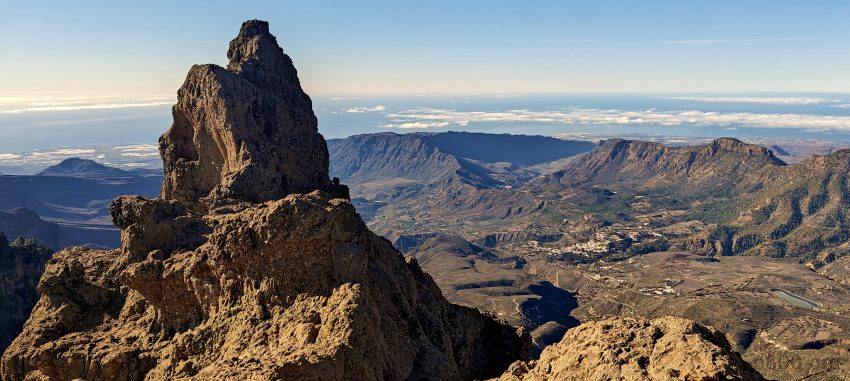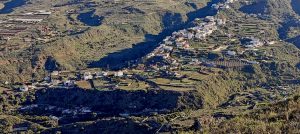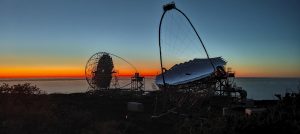El Morrón de la Agujereada stands as the island’s highpoint—an ultra-prominent peak with nearly 100 km of isolation. It boasts an exposed climbing ‘trail’ that snakes its way to the true summit. This challenge is precisely why 99.99 percent of visitors park their cars, stop at the Pico de las Nieves (“touristic high point”) just a few meters off, and claim they’ve conquered Gran Canaria. Understandable, but as peakbaggers, we aim for the genuine summit.

Waking up in the hotel, I check my messages—only Aron has written, expecting to meet at 8:30 am with a Google Maps link attached. I still have plenty of time. En route to the meeting point, I grab a cup of cappuccino and a warm croissant filled with ham and cheese. Mid-bite, I receive a message from John saying he’s landed at Gran Canaria Airport and met Aron. All is well, so I finish my breakfast and walk to the meeting point in the middle of the Telde city park. Deciding where to wait, I choose the gates, grand enough to be called the main entrance to the park.
A few minutes later, I spot two figures emerging from one of the cars—Aron and John. For the next hour, we drive towards the summit, parking at the touristic summit parking area. There, Aron double-checks and prepares all the necessary gear. We don our harnesses and helmets, and in about 20 minutes, we start our short hike to the true summit.


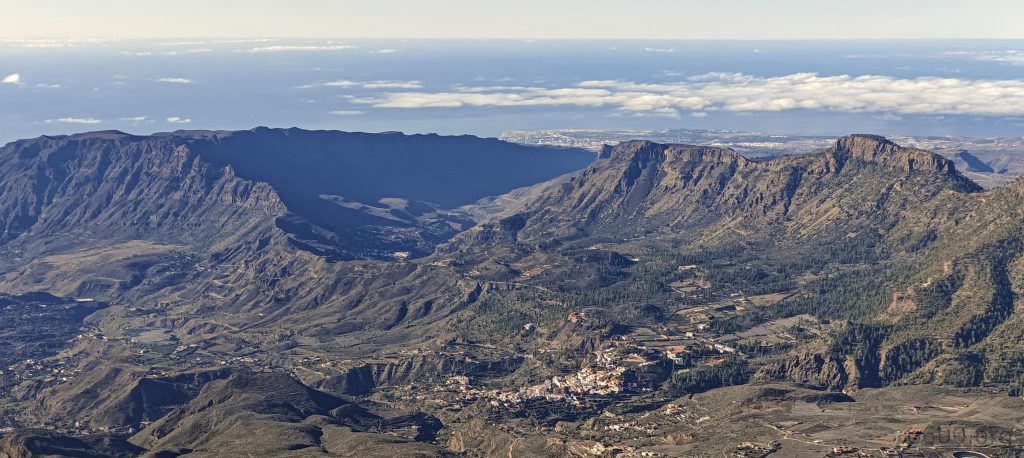
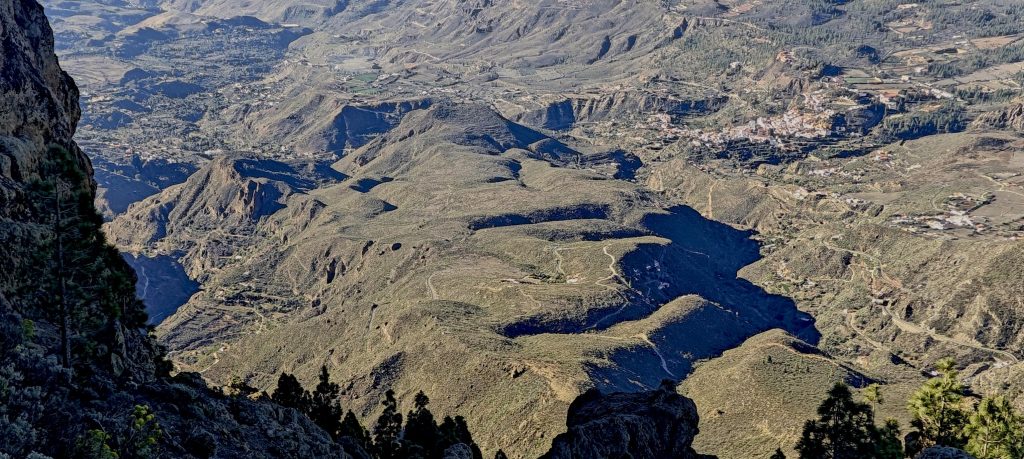

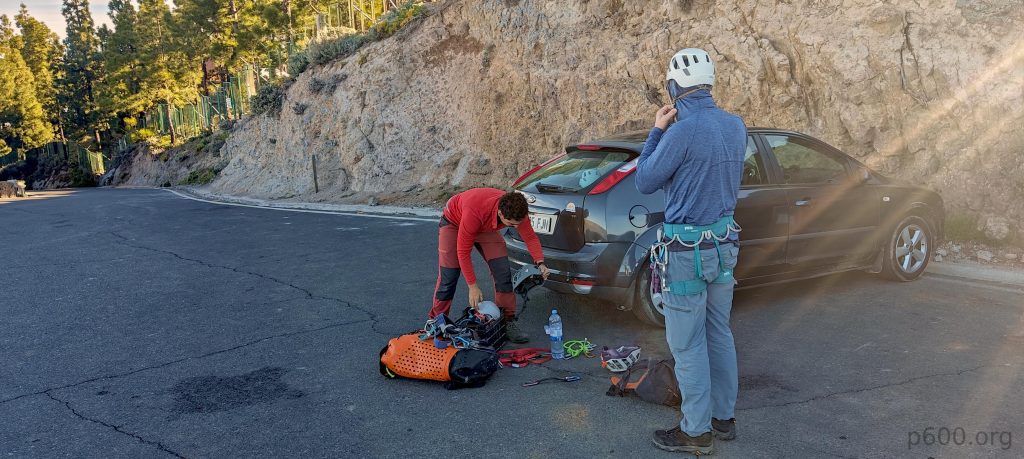



We descend a bit down the ridge, just a few meters. Then comes the first quick scramble down. It’s doable solo, but Aron thinks it’s smart to rope up. Probably a good call, considering the lovely view—straight down a hundred meters. Next, we stroll along the ledge, nothing too tricky, but definitely exposed. Requires a touch of focus. After that, we squeeze through a gap between two rocks. A few more meters on the ledge, then a simple scramble up, a couple more steps, another short stretch to scramble, and we’re on easy ground. Aron kept checking if we needed a hand, which we didn’t, but hey, nice gesture. Thanks.
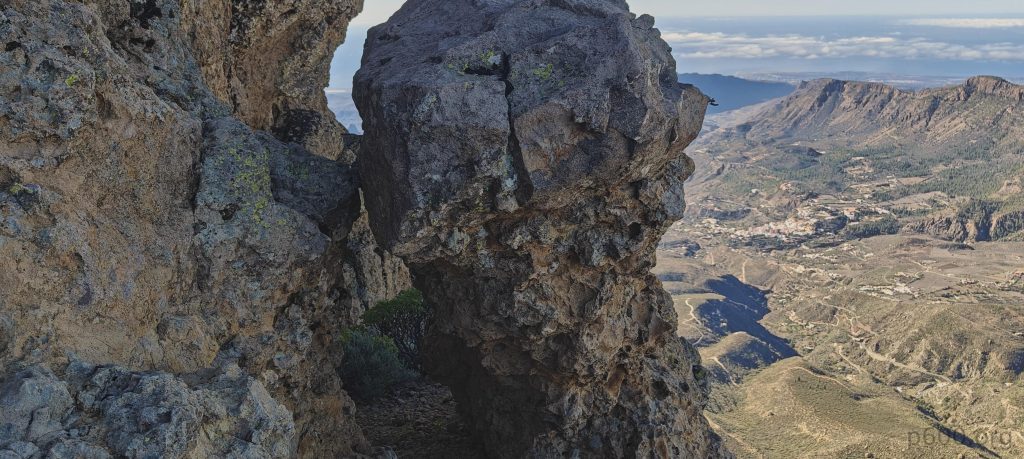
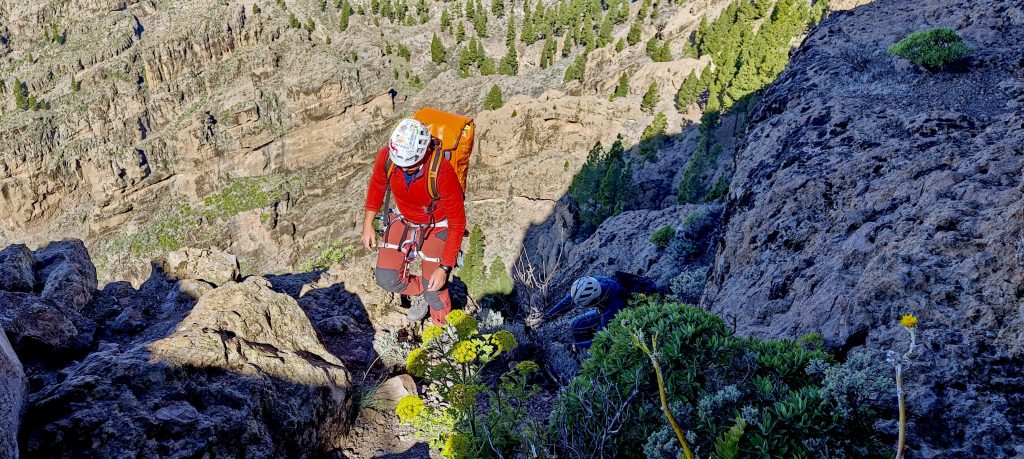
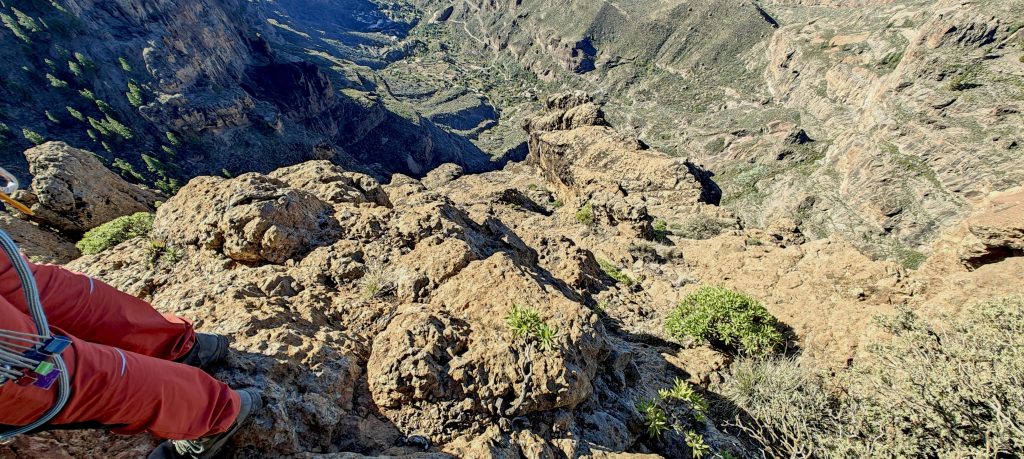

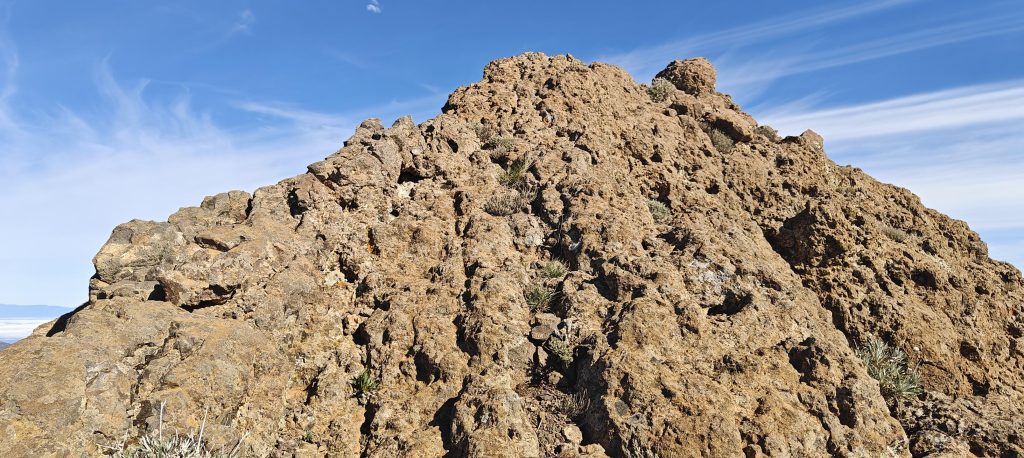
The true summit’s this tiny outcrop, clearly towering above everything else. There’s a logbook where we leave our mark. The views? Pretty much what we’ve been soaking in for the past hour, just now in full 360-degree glory. Snap a few selfies, and we’re all set to head back down.
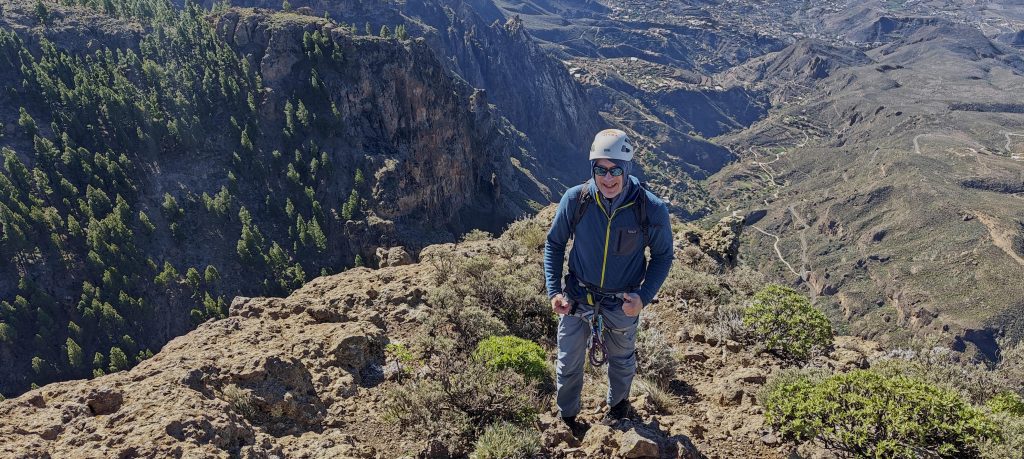
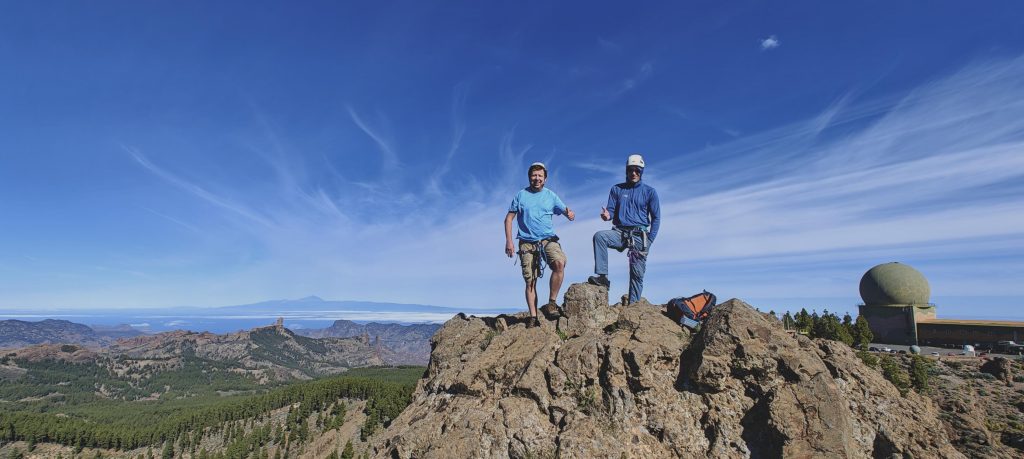
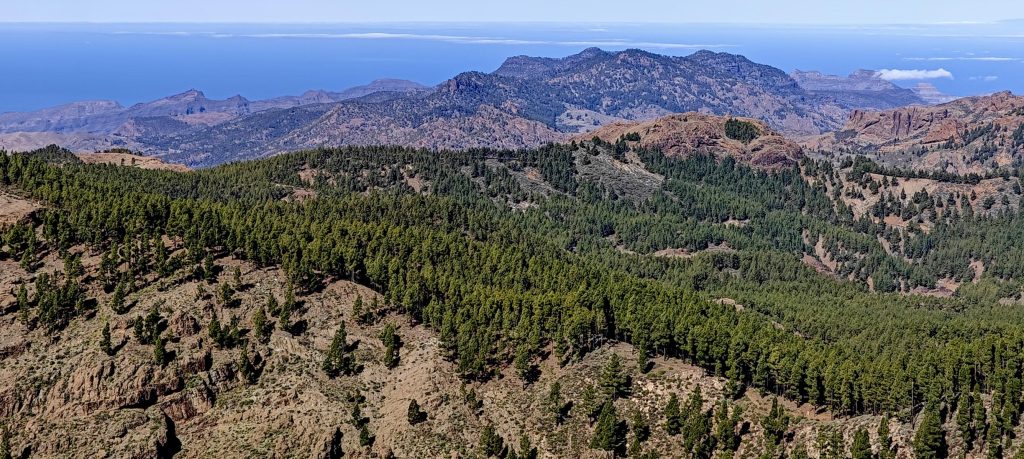
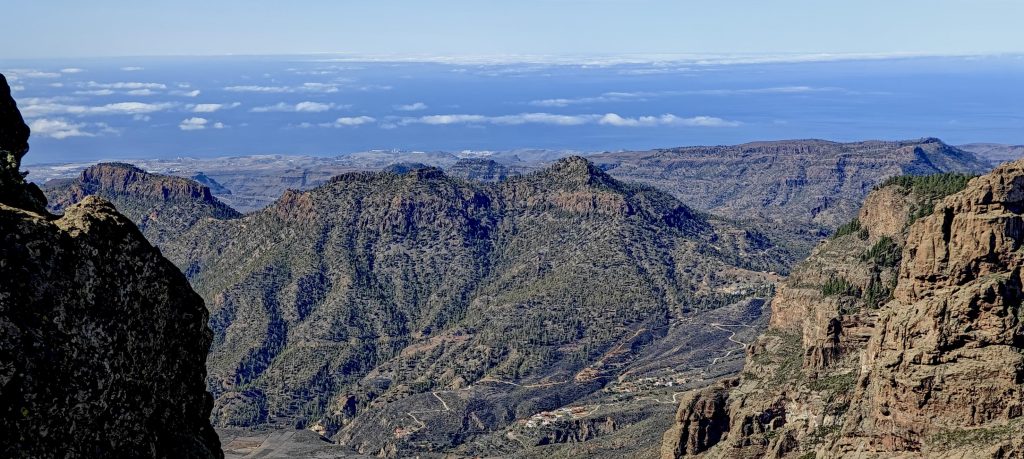
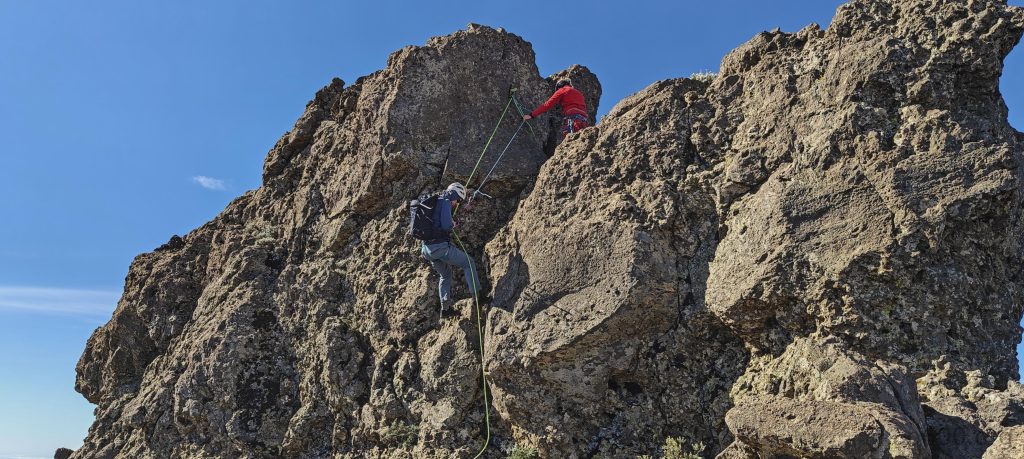
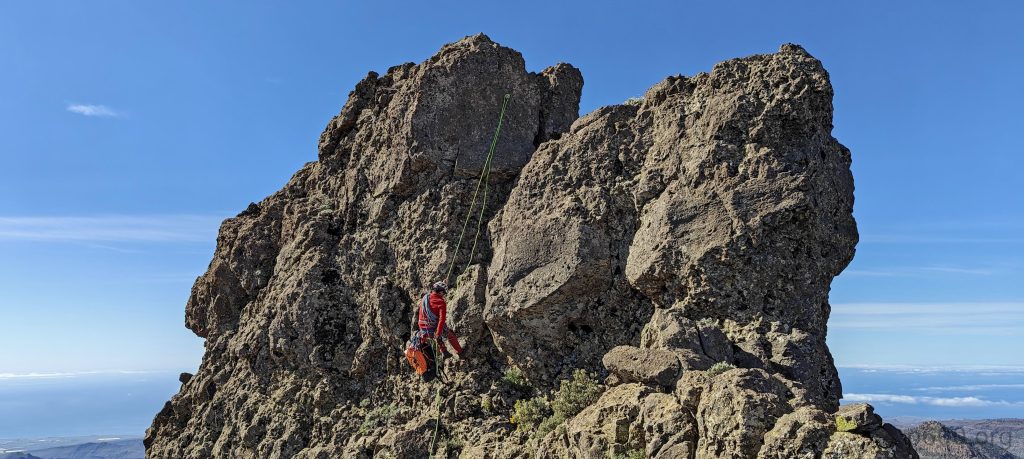
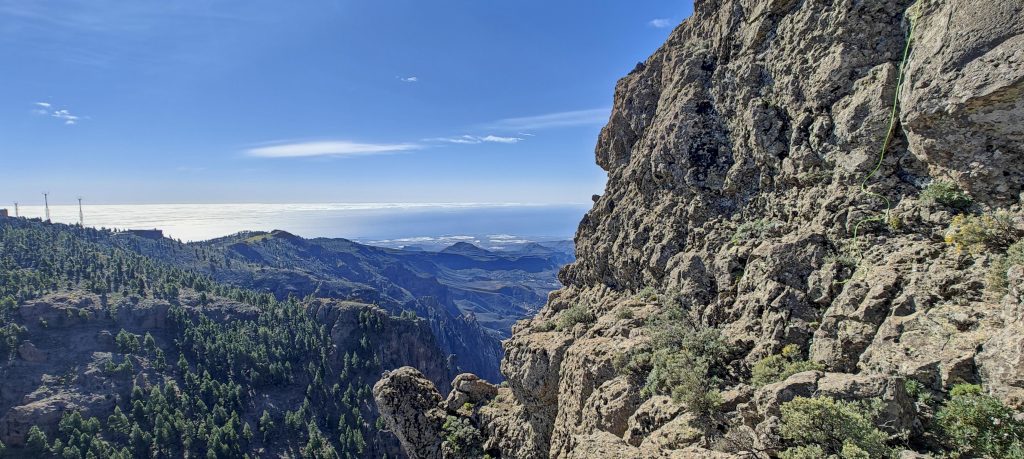
Heading down, we opt for a different route. Aron sets up the ropes, and we rappel down about five meters. Once we’re on a flat platform with a few more bolts, we take a breather. From here, we spot three more folks making their way up to the true peak. Seems like this mountain’s quite the hotspot. Nice. Smooth rappelling for the next 25 meters. Aron’s on point, double-checking every connection, making sure we’re comfy before we kick off. Nice touch. Once we’re down, we navigate an exposed ramp. Not too tough, got some handholds, but definitely requires attention.
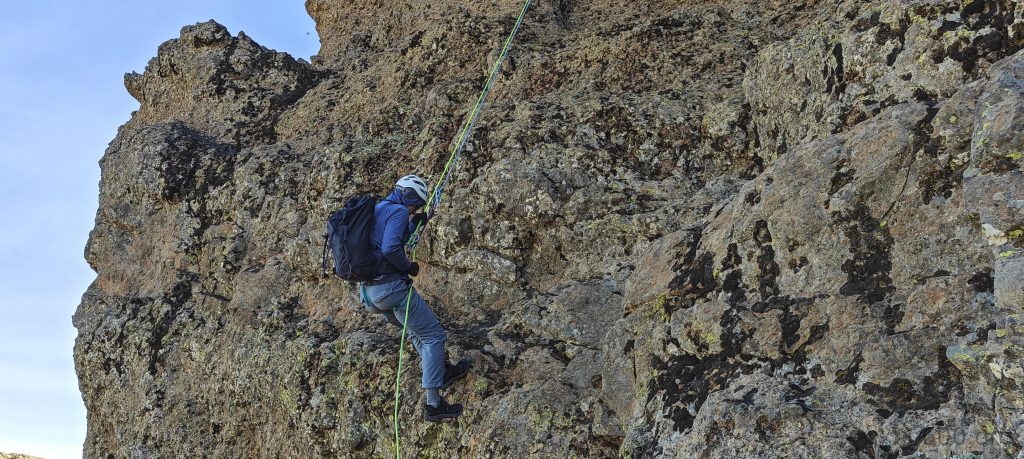
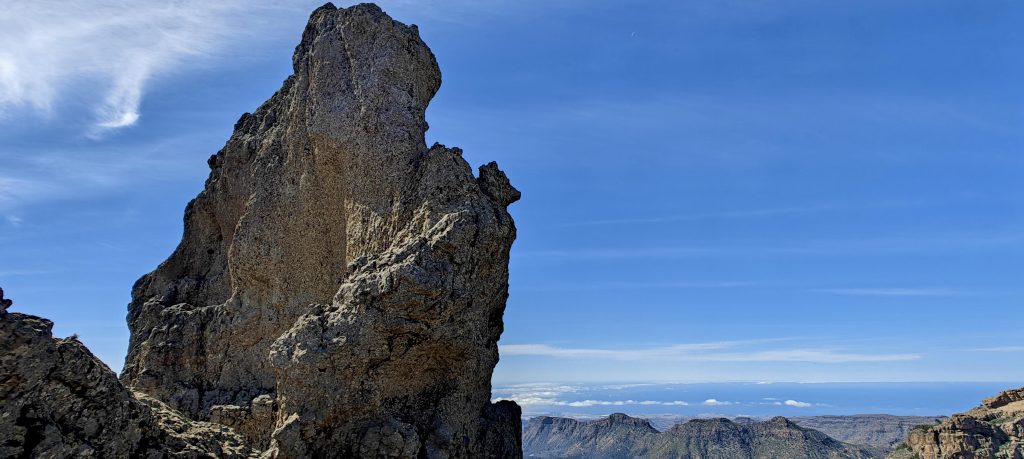
Aron suggests trying a different route, later dubbing it the most beautiful abseil in Gran Canaria. And you know what? I think he’s onto something. The 15-meter abseil is like hanging in mid-air, not many footholds around. You gotta maneuver through this “double arch” setup—start in one, then make your way to the other. It’s a stellar experience, even for a guy like me who conveniently forgot his gloves at home. Hands get a bit toasty, but definitely memorable. Once we’re at the bottom of the arch, there’s still another 5 meters to descend. Sure, we could probably manage without ropes, but why risk it when we’ve got ’em? Safety first, folks.
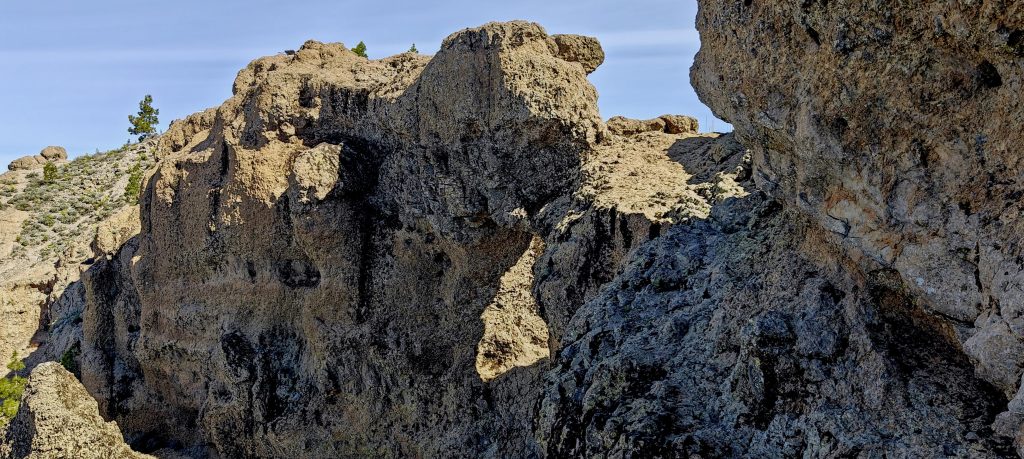
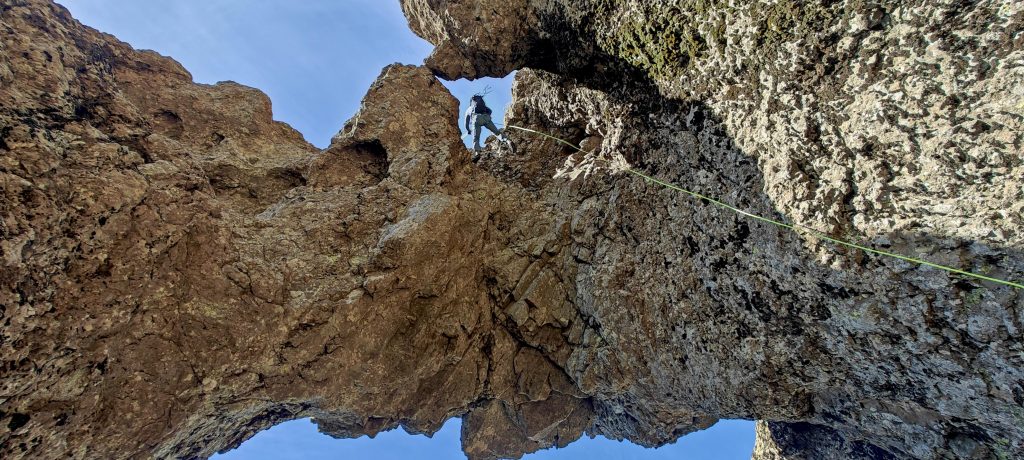


A short stroll back to the parking lot, where tourists in slippers eye us like we’re from another planet. Aron offers us some locally typical and tasty corn snacks, and John and I are fueled up for our next adventure: Roque de los Muchachos on La Palma island.
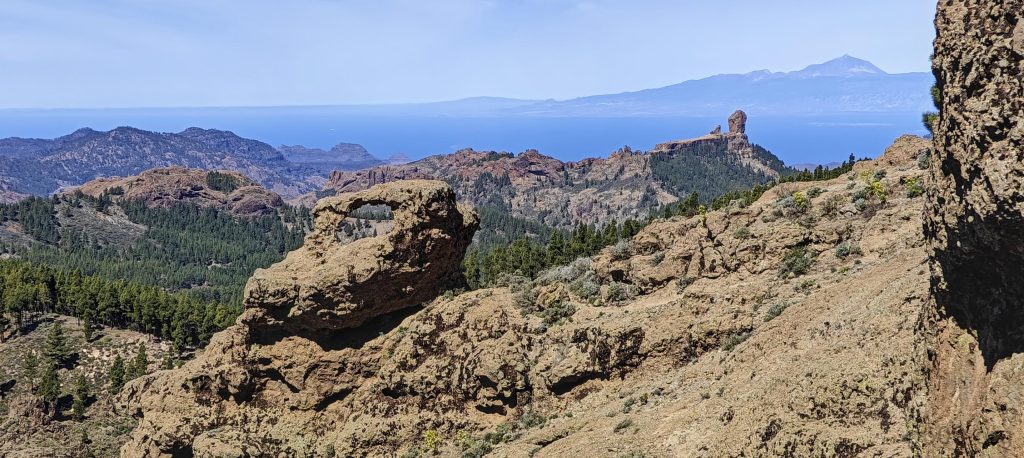
Knowing it would be an exposed climb, we wisely hired a mountain guide from Aron Perez de Umiaga Experience (WhatsApp: +34 646 396 746). Aron demonstrated professionalism and excellent local knowledge throughout the ascent. I’m delighted to have climbed with him and look forward to future encounters. Thanks!
